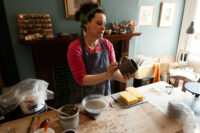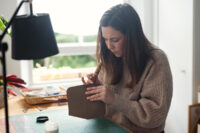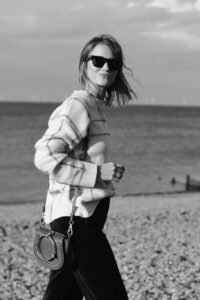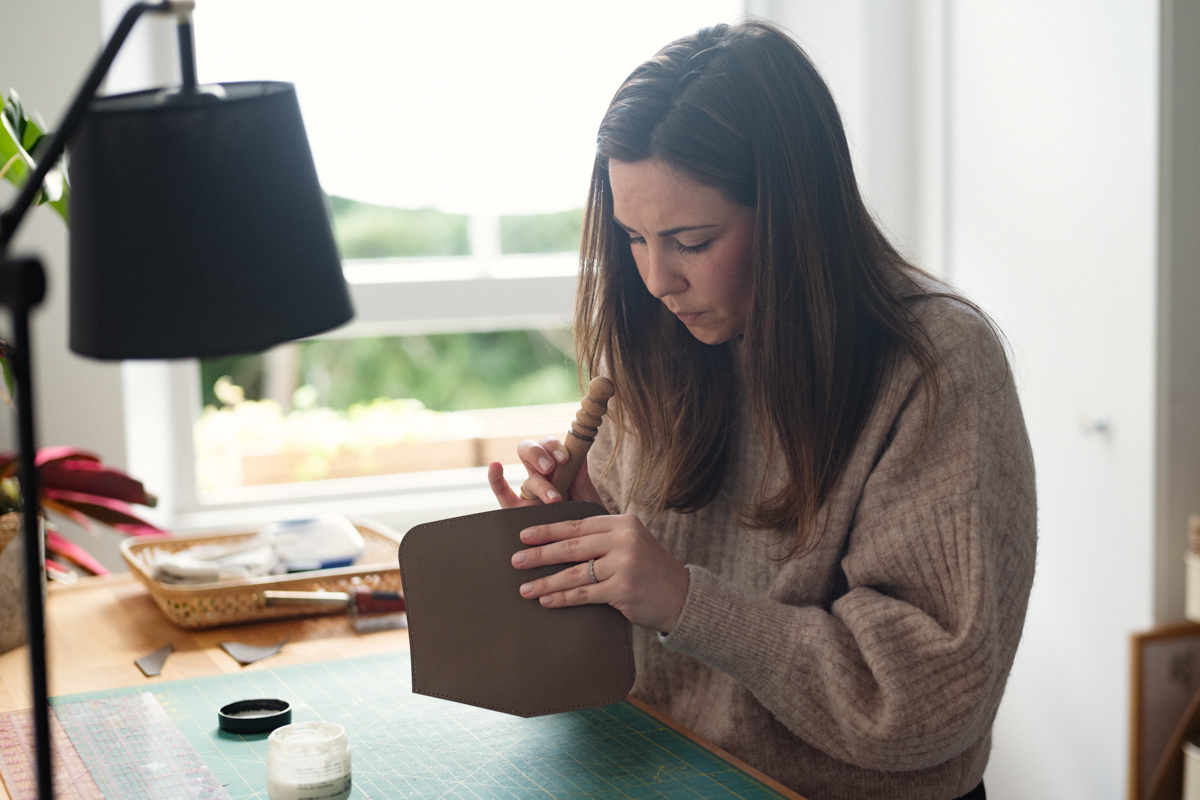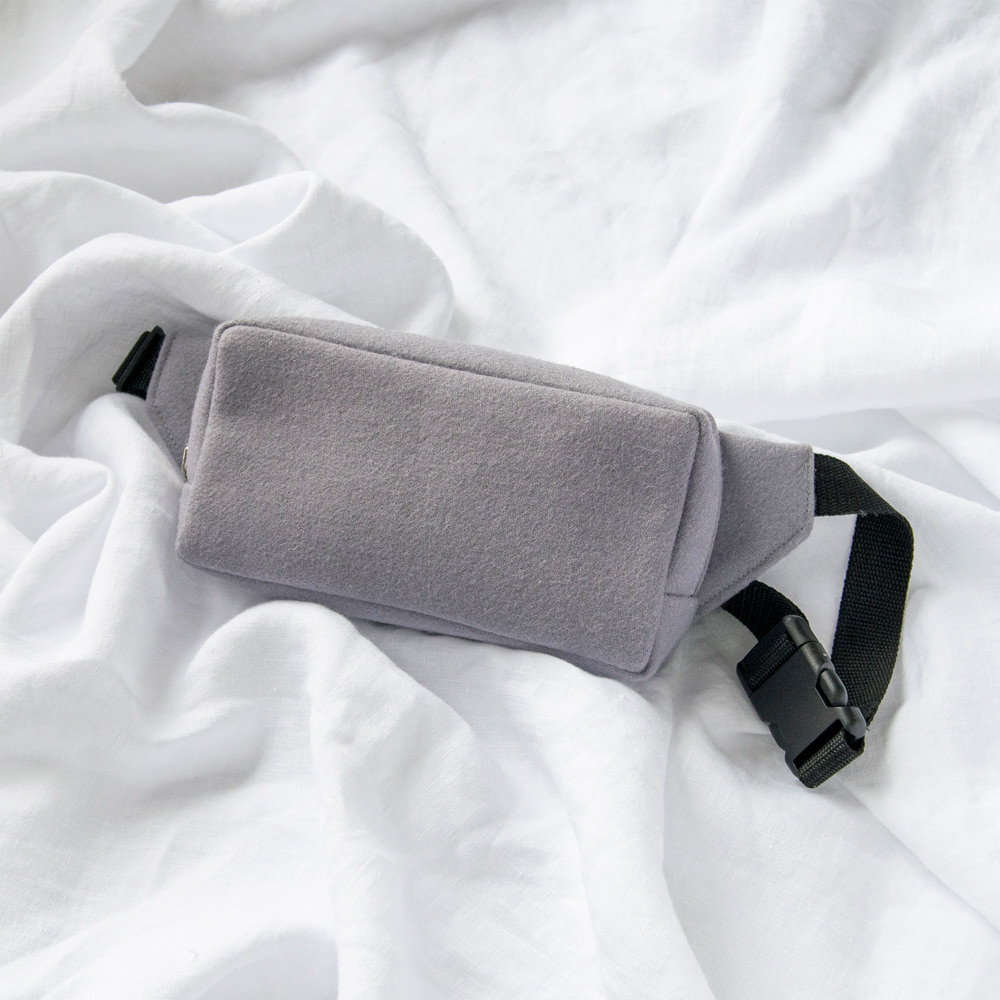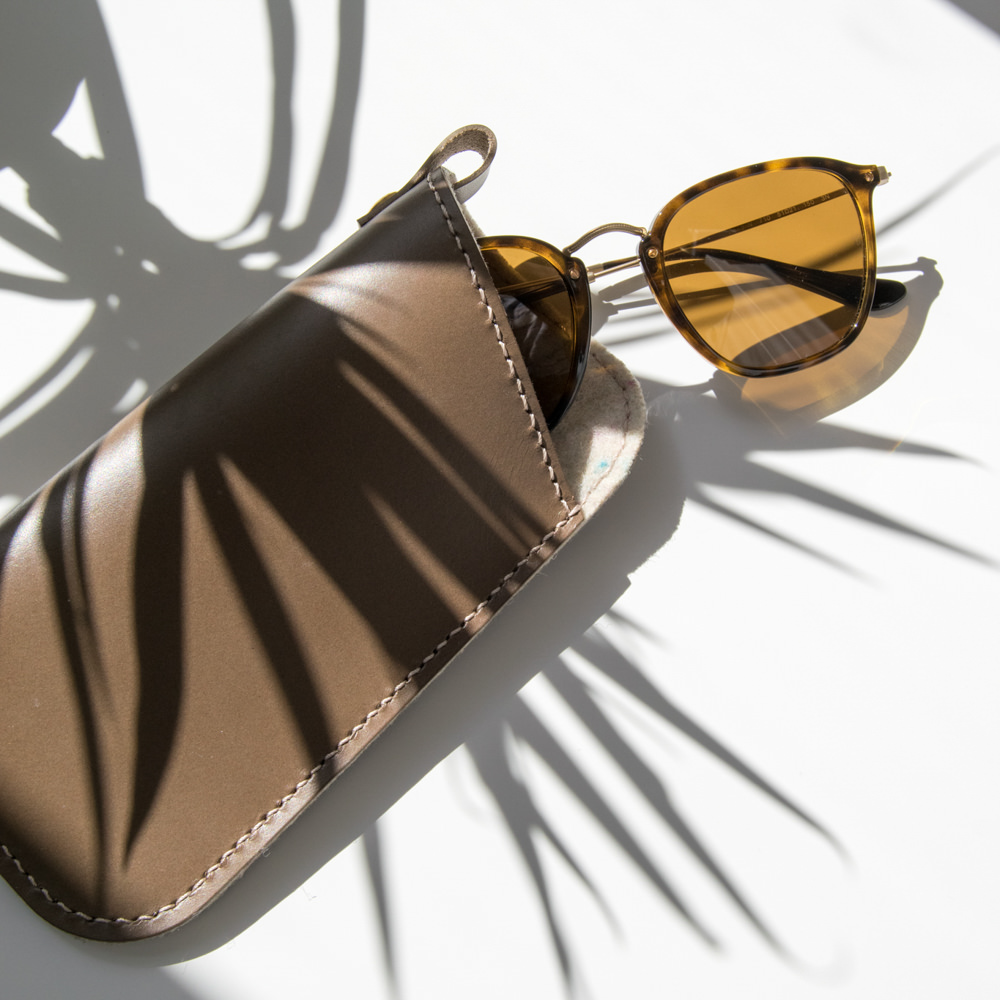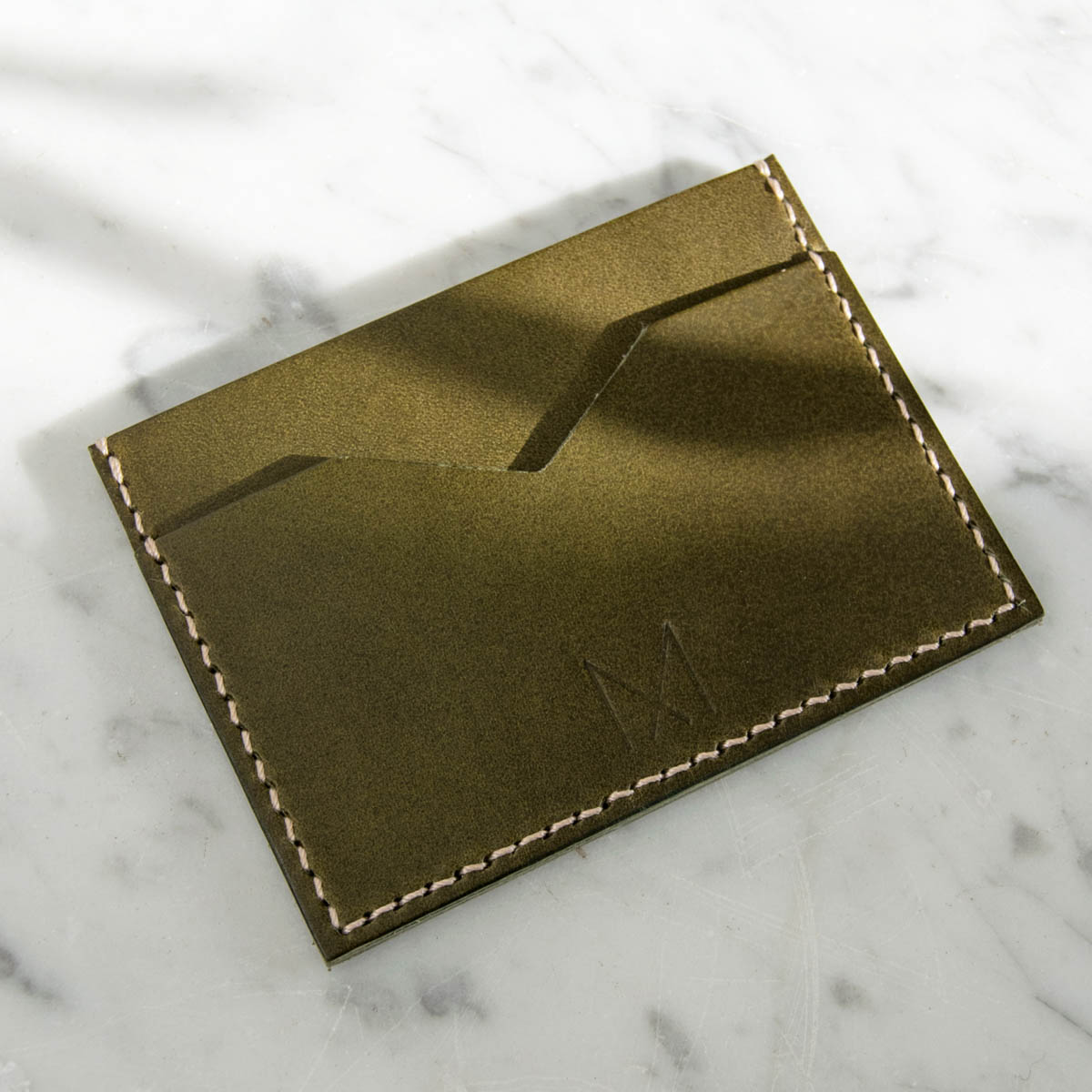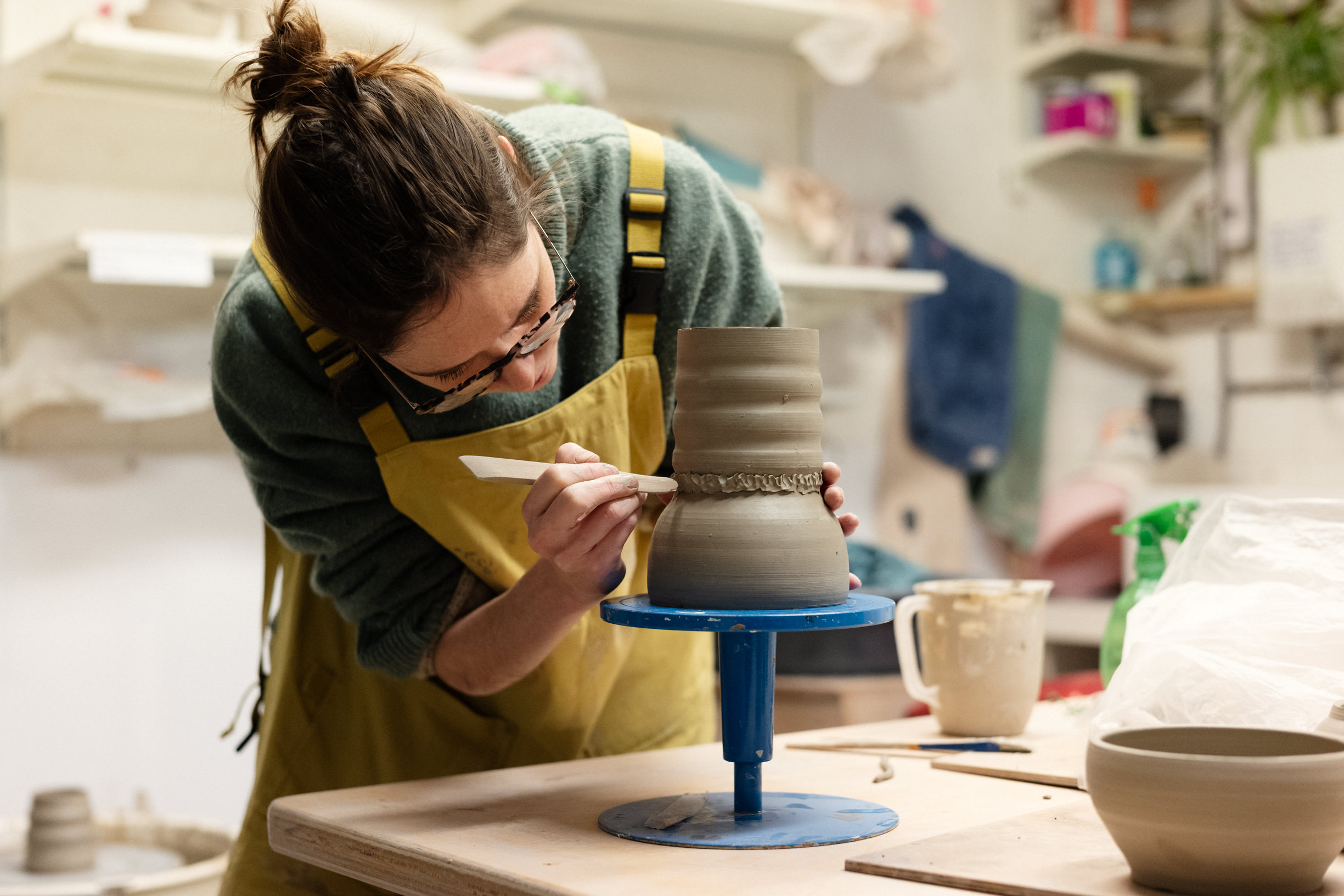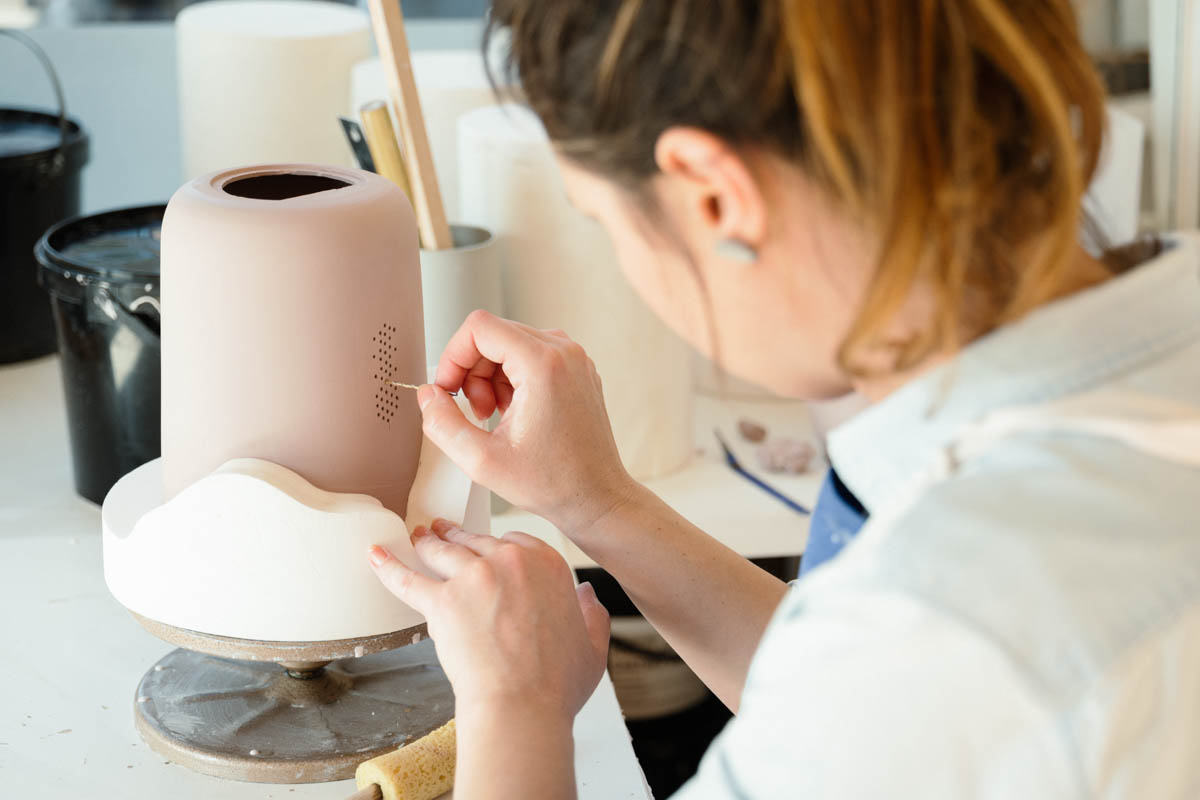In this edition of “Stories with Skills,” we spotlight the creator behind Maragold Designs, who transformed a period of personal burnout into a thriving leather goods brand. Born from a rediscovered business plan conceived in Florence, the brand embodies a commitment to quality, drawing inspiration from the tranquil beauty of Vermont, the artisan spirit of Florence, and the vibrant palette of Provence.
Maragold Designs brings sustainability and craftsmanship to the forefront, with a focused collection that champions small-batch production and the use of eco-friendly materials like Italian vegetable-tanned leather and Portuguese Burel wool. Every piece, especially the signature marbled leather collection, is a narrative of enduring style and conscious creation. Join us as we uncover the story behind the products, where passion for design meets a dedication to artisan traditions and ethical production.
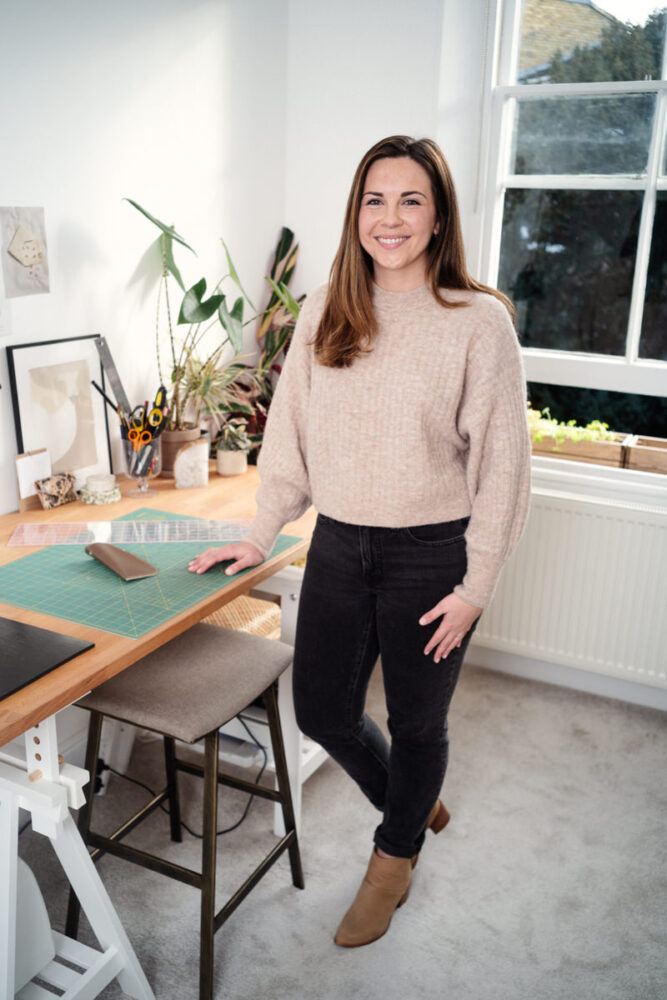
Julianna Cassata
In 2018, I experienced a period of intense burnout that left me feeling lost and directionless. I longed for more fulfilment and connection in my work, and I knew that meant following a more creative and unconventional path.
Shortly after leaving my job to focus on re-charting my career, I was clearing out an old computer and serendipitously stumbled upon a short business plan for a leather goods brand that I’d written while studying in Florence, Italy in 2012. At the time, I was enrolling in different creative workshops to get a sense of what I felt most drawn to, and one of those workshops was a leather wallet making class. I felt a resounding sense of inspiration and immediately began working on the plans for Maragold, ultimately bringing that original business plan to life!
Three places that come to mind as having shaped my work are Vermont, Florence, and Provence.
I grew up frequenting Vermont with my family which instilled in me an appreciation for small, independent businesses with their emphasis on quality, locally produced food, environmental-friendliness, and open-mindedness. Lake Champlain is a stunningly beautiful part of New England; the peace and tranquility of it is hard not to feel inspired by.
My semester abroad in Florence was my first big solo adventure, and it opened my eyes to the possibilities of life, pulling me outside my comfort zone. It was there that I developed an appreciation for artisan, handcrafted leather goods (and marbling!). It’s beautiful at every turn, and you have access to some of the world’s most influential artistic masterpieces.
Lastly is Provence, which was the first international trip I took after leaving my job in 2018. To this day, the colors, textures, and warmth of Provence are very inspiring to me, and you’ll see that come through in my collection with the array of pastel tones, warm neutrals and combinations of textures.
I keep this principle at the heart of all my design decisions. This includes the sourcing of my raw materials, primarily Italian vegetable tanned leather and Portuguese Burel wool.
The leather comes from a family-run tannery that is part of an initiative that works to maintain centuries-old traditional methods of vegetable tanning in Tuscany. The tanneries are held to strict quality, transparency, and sustainability standards, with an emphasis on environmental and social responsibility. Every raw hide is a by-product of the food industry and natural, metal-free, plant-based tannins are used to produce the leather. Furthermore, the waste generated by the tanneries is repurposed into raw materials for other applications, like making bricks and fertiliser.
Burel wool comes from a small factory that went bankrupt due to the rise of synthetic materials in the 60’s and was only recently revived in the early 2000’s. The revival has helped preserve an ancestral, artisan heritage in the region (shepherds wear Burel as protection from the elements) and restored jobs to the remote, mountainous area. With a great respect for nature, the factory has very high sustainability standards, zero waste policy and works with local shepherds whose sheep graze in the mountains, are treated well and are sheared manually.
Both materials are extremely durable, therefore great for creating everyday accessories and bags that will last a long time.
My marbled leather collection is very special to me. In addition to leatherworking, I was also introduced to marbling while studying in Italy. I love paper goods and traditionally, marbling is done on paper, but I had the idea to try it on leather and fabric.
When I lived in Boston, I didn’t have the chance to take a marbling workshop because no one offered one near me. Once I moved to London, I was able to find one locally and enrolled once workshops were offered again post-pandemic. I became immediately hooked and felt a profound sense of motivation and reconnection with my creative roots. In my business, I like to let curiosity lead the way and marbling is a prime example of that.
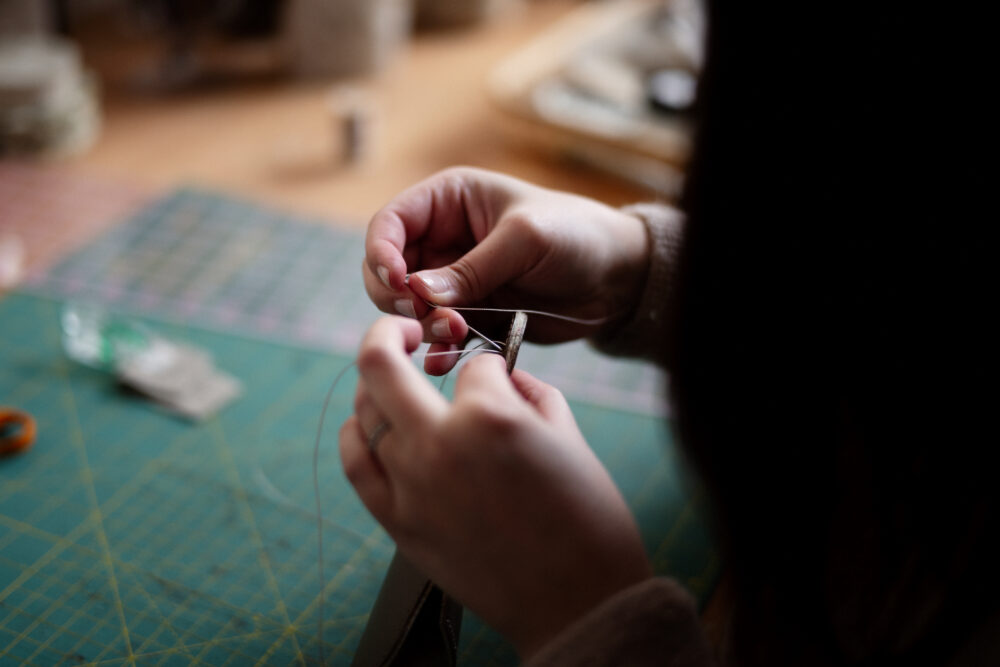
Designing a new product involves a lot of trial and error. I tend to mull over an idea in my head for a long time until I can’t hold it in any longer and need to sit down and try to do it, or research how to go about constructing it. As I work, I always have a paper and pencil close by, making notes, sketching, and cutting out my idea on scrap paper to get a sense of scale.
In terms of materials and colors, I firstly try to use what I have before sourcing something new. This not only enables me to limit waste but also helps keep my collection cohesive. I want my customers to be able to build their own unique set of Maragold products and for everything to make sense together. Functionality-wise, I always keep their needs in mind and think about what would make their lives easier – and then I think about how I can elevate it and bring it to life in my own unique way.
I find a lot of inspiration for colour combinations and styles from taking in my surroundings, especially when traveling or walking around London. I’m always taking mental notes and pictures of details I notice; colour palettes, patterns, textures, architectural elements, independent shops, local artisan spaces, people’s unique styles, regional textiles from where I’m visiting, hearing someone’s story, walking through markets, visiting museums – and more!
I make everything myself which gives me control over my stock levels and bringing new ideas to life on my own time. Some of my designs are made-to-order while others are made in small batches (for example, the marbled leather goods). I’ve chosen to produce in small batches to limit waste and prevent overproduction. This approach also enables me to curate a cohesive and intentional collection, regularly assessing what I’m offering to my customers.
Lead time and predicting how many pieces to make, when producing a batch, have been two of the biggest hurdles with this approach. I’d also say that the pressure to keep up with the bigger, faster-moving brands can creep up but at the end of the day, I keep ‘quality over quantity’ at the heart of everything I produce – and I’m the only one working on my business! My goal is to create unique and timeless pieces that will last, not try to keep up with ever-changing trends and perpetuate the cycle of fast fashion and overconsumption.

I’d say I’m still working on this one, four years into my business! I juggle Maragold alongside another job and so there are certain times of day that I’m either working on one or the other. Generally, getting out of my studio space and outside enables me to clear my head and make space for ideas to flow, especially when transitioning between the two.
When I travel, I research textile artisans, shops, and museums to visit. Outside of my business, I’m really interested in fabrics and how other artists and designers use them to interpret their unique styles.
I first encountered Burel wool on a trip to Portugal where I purchased a beautiful, woven blanket as a souvenir of my trip. Years later, while I was developing my business, my mum was going on a trip to Portugal and asked if there was any leather I’d like her to look at while she was there. While there weren’t any suitable leather options, Burel fabric stole my heart and knew I wanted to find a way to work it into my designs.
The unique blend of the rich and rigid, buttery soft leather with the texture and softness of the wool is what sets Maragold apart from other leather goods brands. I love the way they work together; both materials are timeless and enduring, but the combination feels modern and interesting.
In the pursuit of ‘quality over quantity’ and conscious consumption, I aim for all my designs to be functional, versatile, and wearable but to feel elevated and different from what high street brands are producing. One example is the wool belt bag, which is my take on a casual bum bag but elevated by the boxy structure, textural wool, and contrasting metal zip. It can be worn across the waist or chest and works with casual, everyday outfits but also looks great dressed up for a dinner out over a wool coat or leather jacket.
Joyful, comfortable, and put together – uplifted and ready to take on the day. I hope that by supporting Maragold (and hopefully other small businesses!), my customers feel a sense of living out their values through what they welcome into their wardrobes and homes.


